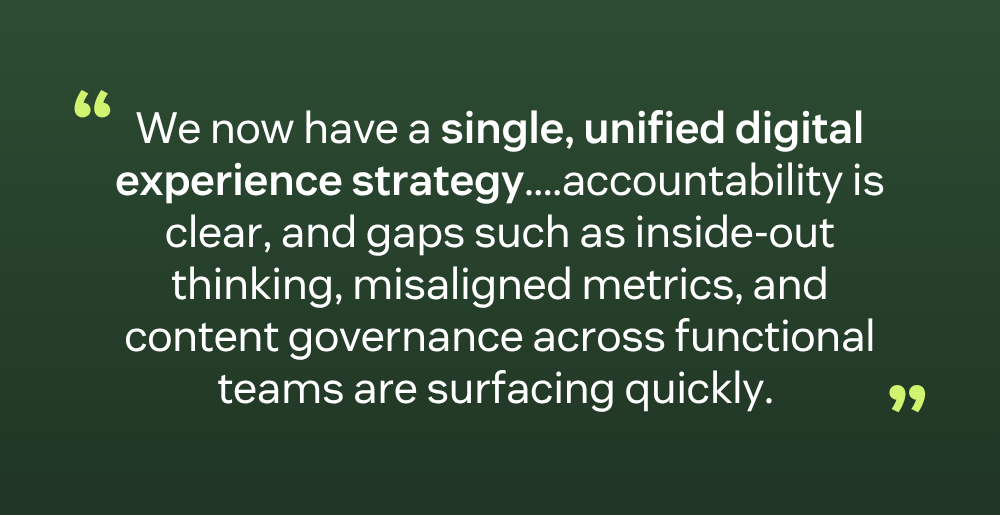Article • 5 min read
HR and IT fusion teams are the future
We believe HR and IT teams belong together. Here’s why and how to get started.
Mariah Schuknecht
VP of People Transformation and Operations at Zendesk
Última atualização em November 10, 2025
The most enduring organizational designs are the ones that evolve as the work itself changes. Today, the intersection of AI and human work is reshaping the way value is created inside companies. This shift demands new operating models—ones that collapse the distance between technology choices and the human experiences they power.
At Zendesk, we’ve placed a deliberate bet: HR and IT belong together. Three months ago, we moved our VP of People Transformation and Operations (me!) into the CIO organization, while maintaining a dotted line to our Chief People Officer (CPO). Our hypothesis is simple: bringing HR and IT together—aligned to shared outcomes and powered by Zendesk technology—will increase productivity, accelerate digital transformation, reduce costs, and create a better employee experience.

I’m already seeing tangible benefits: we now have a single, unified digital experience strategy, one automation and governance team, and a consolidated prioritization backlog. Accountability is clear, and gaps such as inside-out thinking, misaligned metrics, and content governance across functional teams are surfacing quickly. Teams are accelerating and focusing on the right priorities.
These are outcomes that can benefit all teams. And though we may still be early in our own journey, I firmly believe it’s the right one for us. That’s why I’m committed to sharing our learnings—why we’re doing this, what it looks like in practice, and the benefits we’re seeing so far—so that others can decide if it’s the right move for their organizations.
What are fusion teams and how do they work?
When HR and IT’s powers combine, they create something special: a unified employee experience that’s built on joint ownership and continuous improvement.
Fusion teams bring together IT’s platform expertise, integration discipline, and security rigor with HR’s understanding of employee journeys, policies, and the moments that matter. They operate like a product team – bringing together business owners, product/experience managers and technology leads to co-manager prioritization and delivery and create short feedback loops with key stakeholders.
When that alignment happens, teams can:
- Orchestrate seamless employee journeys (onboarding, offboarding, job changes, leave) across systems and teams and reduce functional fragmentation.
- Accelerate adoption of digital tools—and retire those that employees do not need.
- Reduce total cost of ownership by consolidating platforms and making smarter ecosystem decisions.
- Move faster and more safely on AI—because AI thrives on clean data, consistent processes, robust access controls, and well-governed knowledge.
- Raise the bar on privacy and security by centralizing sensitive employee data where it belongs, with IT enforcing access and HR maintaining context.
- Make data driven decisions – measuring what matters, versus what is (as has previously been done under a function-specific orientation).
This combination creates a single, connected employee experience. Instead of separate “ask” channels or competing ‘front doors’, employees have one entry point for help. AI-enhanced search and messaging guide them to the right place, while shared governance keeps information accurate, accessible, and focused on measurable impact.
Why fusion teams work better
Employee experiences are meant to be a single, seamless journey, but in traditional setups, where HR and IT operate separately, that journey can break down.
Separate roadmaps slow progress. Fragmented data and content weakens AI. Duplicate tools increase cost and complexity. And without shared governance, privacy and security become harder to manage.
Fusion teams solve these problems by aligning technology and people around the same outcomes and impact measurements.The result is an elevated consistent, secure, and frictionless experience for employees—and a more efficient, agile organization.
How we’re putting this into practice at Zendesk
Instead of treating HR and IT as distinct service functions, we’re approaching them as a single, connected system. In addition to moving me under the CIO organization, we’re working to further connect our people, processes, and technologies around the shared goal of delivering better, more impactful experiences for our employees.
Here’s what that looks like so far:
- Unified employee experience strategy. Our HR and IT teams now share one digital experience and AI roadmap, aligning automation, analytics, and knowledge management under a single plan of record.
- Shared prioritization and governance. We now have one intake process and backlog for HR and IT initiatives, reducing duplication and ensuring both teams focus on the same outcomes.
- Connected journeys. We’re mapping end-to-end employee journeys—like onboarding, mobility, and leave—to understand where friction occurs and how automation or AI can improve them.
- Data and knowledge as shared assets. Content, process standards, and permissions are now governed jointly, which strengthens AI performance and ensures accuracy, security, and trust.
- Continuous learning loop. We use employee feedback and analytics to review progress quarterly, refining priorities and solutions based on what people actually experience.
Where to begin
We’re still early in this journey, but the impact is already real. Bringing HR and IT together has helped us gain a more holistic view of how we serve employees, improve experiences, and help our organization thrive. Decisions are clearer, teams move faster, and accountability is shared.
One thing I’ve learned is that the path doesn’t have to start with a big restructure. Real progress begins when HR and IT work as one team, guided by a shared understanding of the people they support and the outcomes they want to achieve.
Fusion teams make that possible. They bring technology and human work into alignment so each strengthens the other. When that happens, employees feel it—and the organization does too.
